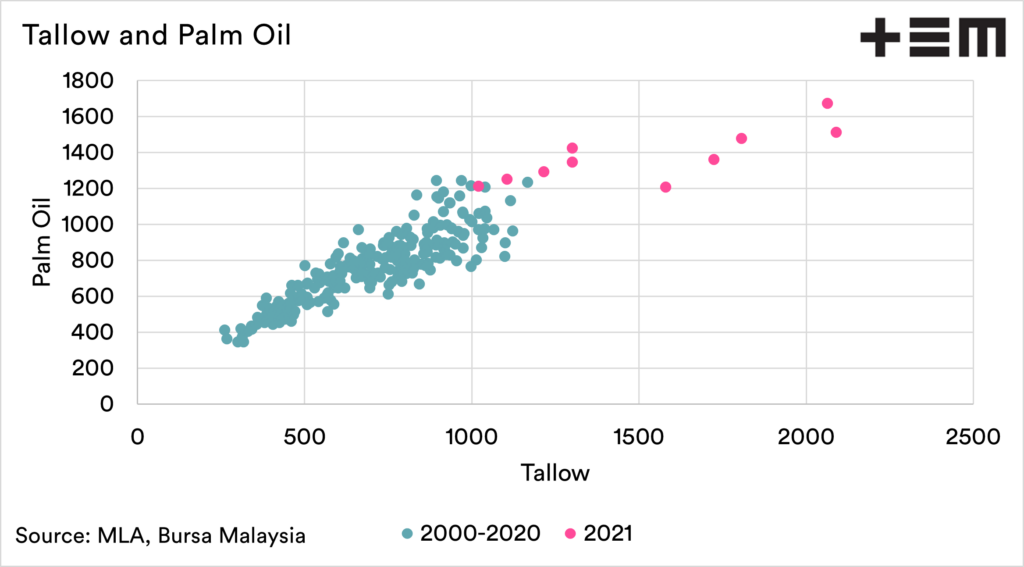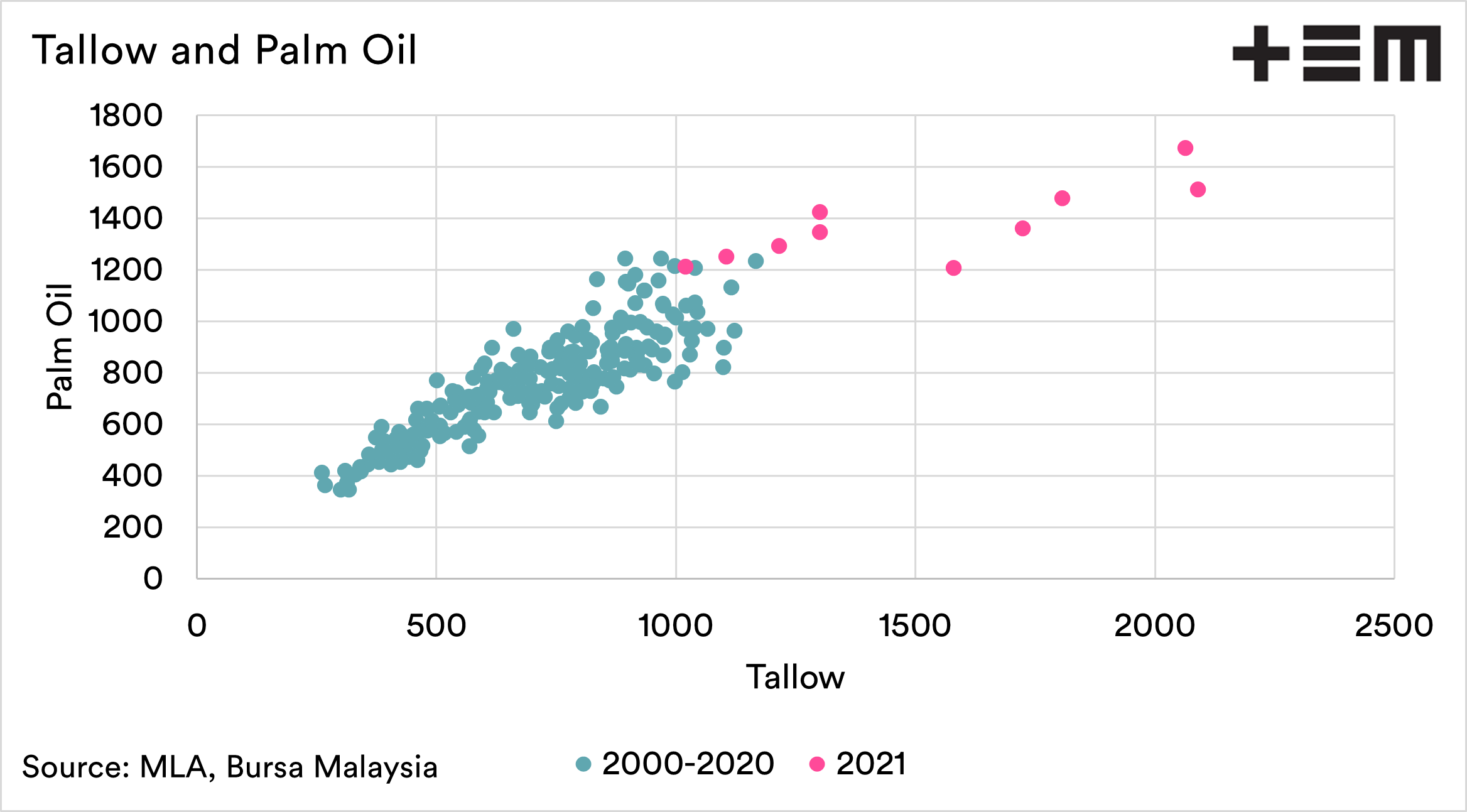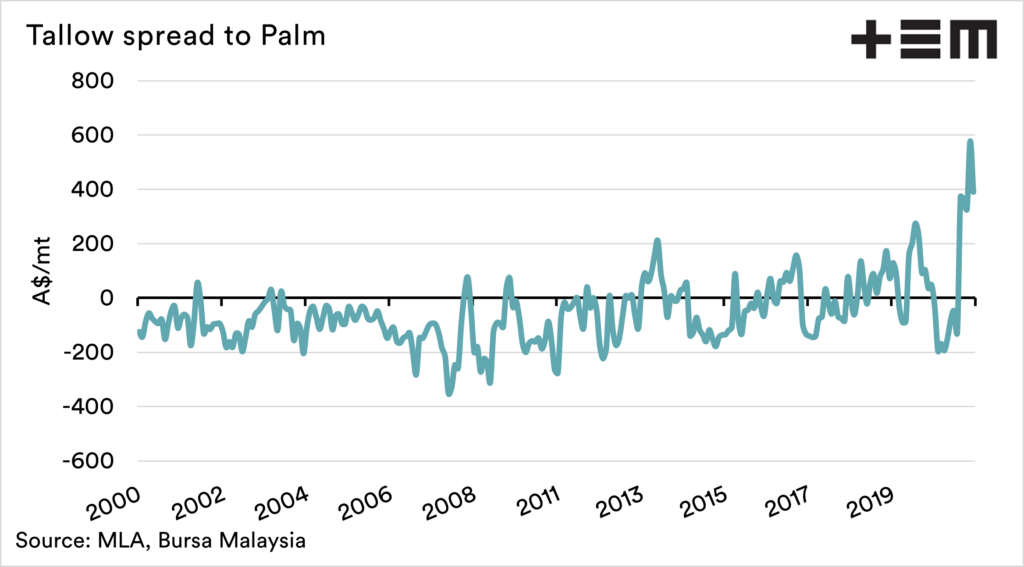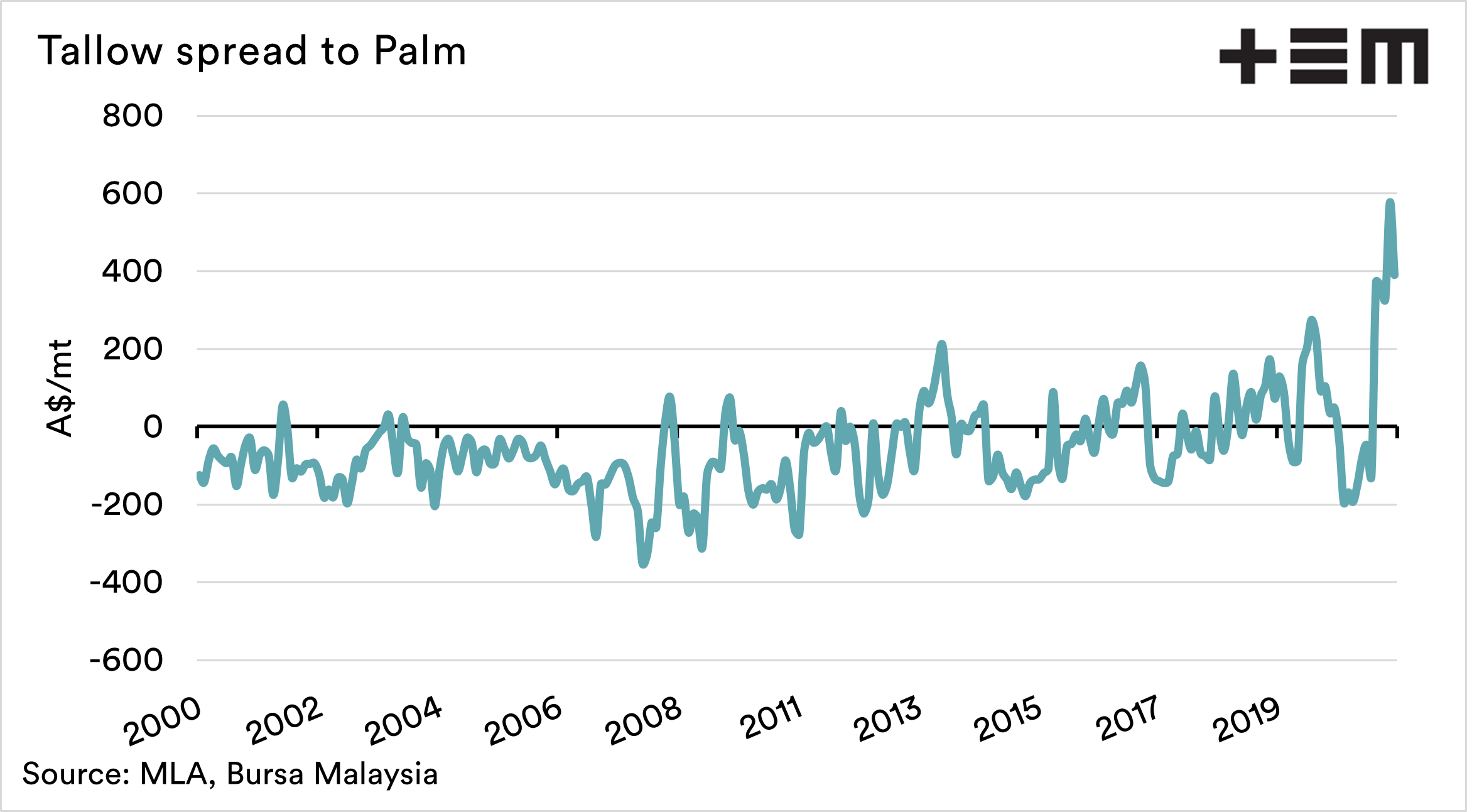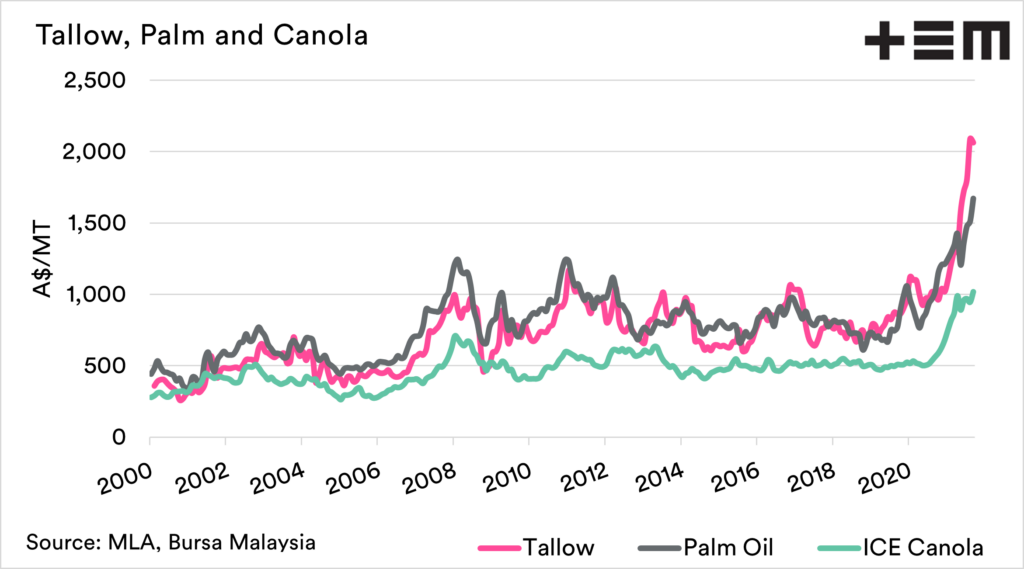Market Morsel: The Frying Scotsman

Market Morsel
As a Brit, fish and chips are a part of life. To such an extent, the humble fish and chips were one of the few food products that were not rationed during the first or second world wars. During D-Day landings, the friend or foe signal was the prompt “fish” followed by the response “Chips”. So that’s the history lesson for today.
Besides making me think about lunch, why am I talking about fish and chips?
Traditionally, the best fish and chips are fried in tallow. The price of tallow has come up massively during the past year.
Tallow trades in a similar pattern to the vegetable (seed) oils. The first chart below shows the relationship between palm oil and tallow since 2000. As we can see, there is a strong relationship between the two pricing points.
The relationship is close because they are both in the same subset of commodities that have similar uses. This year, we have seen that the price of tallow has increased and moved to a very strong premium to palm. We expected that tallow would hit record levels back in May (read Offally Expensive)
Whilst many, if not most, use vegetable oil for frying, they are still hit with higher pricing. This year, the entire oilseed complex has hit dizzying heights from soybeans to canola.
Whilst this is good for farmers, growing oilseeds, others in the supply chain are hit by higher costs. These costs will eventually be passed onto the consumer.
So the axis and nazi’s couldn’t cause rationing of fish and chips, but it might be the high prices of oil that finally cause rationing!

